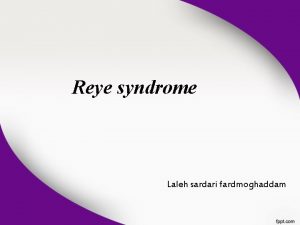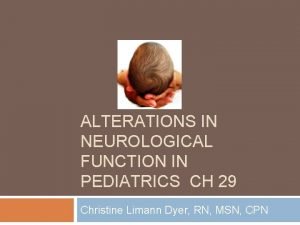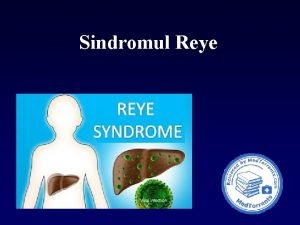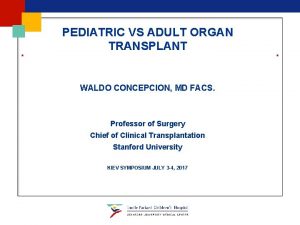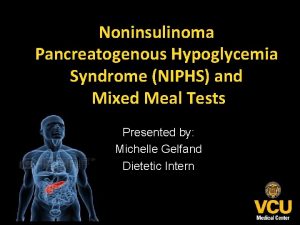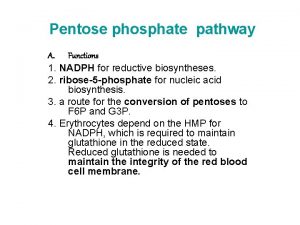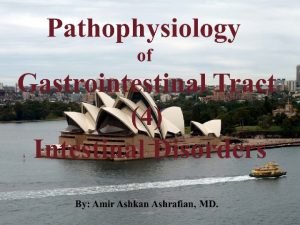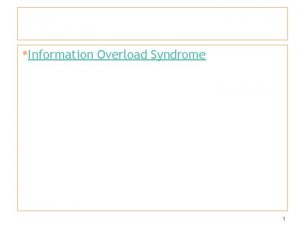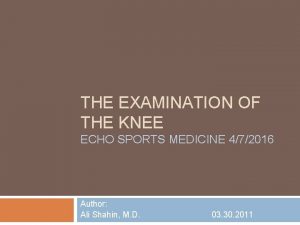Reye syndrome Laleh sardari fardmoghaddam Reye syndrome is

![Reye syndrome is a rapidly progressive encephalopathy. [1] Symptoms may include vomiting, personality changes, Reye syndrome is a rapidly progressive encephalopathy. [1] Symptoms may include vomiting, personality changes,](https://slidetodoc.com/presentation_image/4294008ca18c134ed7bab49521b5a5af/image-2.jpg)
![The cause of Reye syndrome is unknown. [1] It usually begins shortly after recovery The cause of Reye syndrome is unknown. [1] It usually begins shortly after recovery](https://slidetodoc.com/presentation_image/4294008ca18c134ed7bab49521b5a5af/image-3.jpg)





![Stage V Very rapid onset following stage IV Deep coma Seizures Multiple organ failure[9] Stage V Very rapid onset following stage IV Deep coma Seizures Multiple organ failure[9]](https://slidetodoc.com/presentation_image/4294008ca18c134ed7bab49521b5a5af/image-9.jpg)






- Slides: 15

Reye syndrome Laleh sardari fardmoghaddam
![Reye syndrome is a rapidly progressive encephalopathy 1 Symptoms may include vomiting personality changes Reye syndrome is a rapidly progressive encephalopathy. [1] Symptoms may include vomiting, personality changes,](https://slidetodoc.com/presentation_image/4294008ca18c134ed7bab49521b5a5af/image-2.jpg)
Reye syndrome is a rapidly progressive encephalopathy. [1] Symptoms may include vomiting, personality changes, confusion, seizures, and loss of consciousness. [2] Even though liver toxicity typically occurs, yellowish skin usually does not. [1] Death occurs in 20 -40% of those affected and about a third of those who survive are left with a significant degree of brain damage
![The cause of Reye syndrome is unknown 1 It usually begins shortly after recovery The cause of Reye syndrome is unknown. [1] It usually begins shortly after recovery](https://slidetodoc.com/presentation_image/4294008ca18c134ed7bab49521b5a5af/image-3.jpg)
The cause of Reye syndrome is unknown. [1] It usually begins shortly after recovery from a viral infection, such as influenza or chickenpox. [2] About 90% of cases are associated with aspirin (salicylate) use in children. [1] Inborn errors of metabolism are also a risk factor. [3] Changes on blood tests may include a high blood ammonia level, low blood sugar level, and prolonged prothrombin time. Often the liver is enlarged. [1] Prevention is typically by avoiding the use of aspirin in children. [2] When aspirin was withdrawn for use in children a decrease of more than 90% in rates of Reye syndrome was seen. [1] Early diagnosis improves outcomes. Treatment is supportive. [2] Mannitol may be used to help with the brain swelling. [1] The first detailed description of Reye syndrome was in 1963 by Douglas Reye. [4] Children are most commonly affected. It affects less than one in a million children a year. [1] The general recommendation to use aspirin in children was withdrawn because of Reye syndrome, with use of aspirin only recommended in Kawasaki disease.

Signs and symptoms Reye syndrome progresses through five stages

Stage I • Rash on palms of hands and feet • Persistent, heavy vomiting that is not relieved by not eating • Generalized lethargy • Confusion • Nightmares • No fever usually present[8] • Headaches

Stage II • • Stupor Hyperventilation Fatty liver (found by biopsy) Hyperactive reflexes

Stage III Continuation of Stage I and II symptoms Possible coma Possible cerebral edema Rarely, respiratory arrest

Stage IV Deepening coma • Dilated pupils with minimal response to light • Minimal but still present liver dysfunction •
![Stage V Very rapid onset following stage IV Deep coma Seizures Multiple organ failure9 Stage V Very rapid onset following stage IV Deep coma Seizures Multiple organ failure[9]](https://slidetodoc.com/presentation_image/4294008ca18c134ed7bab49521b5a5af/image-9.jpg)
Stage V Very rapid onset following stage IV Deep coma Seizures Multiple organ failure[9] Flaccidity Hyperammonemia (above 300 mg/d. L of blood) Death

Causes The precise mechanism by which Reye syndrome occurs is unknown. This serious condition is described as a "syndrome" rather than a disease as the clinical features that physicians use to diagnose it are quite broad.

Differential diagnosis Causes for similar symptoms include Various inborn metabolic disorders Viral encephalitis Drug overdose or poisoning Head trauma Liver failure due to other causes Meningitis Kidney failure Shaken baby syndrome

Prognosis Documented cases of Reye syndrome in adults are rare. The recovery of adults with the syndrome is generally complete, with liver and brain function returning to normal within two weeks of onset. In children, however, mild to severe permanent brain damage is possible, especially in infants. Over thirty percent of the cases reported in the United States from 1981 through 1997 resulted in fatality

Epidemiology Reye syndrome occurs almost exclusively in children. While a few adult cases have been reported over the years, these cases do not typically show permanent neural or liver damage. Unlike in the UK, the surveillance for Reye syndrome in the US is focused on patients under 18 years of age.


Thank you
 Reye syndrome symptoms
Reye syndrome symptoms Reye syndrome
Reye syndrome Sdr reye
Sdr reye Waldo concepcion
Waldo concepcion Caudal regression syndrome
Caudal regression syndrome Whipple's triad
Whipple's triad Wernicke-korsakoff syndrome
Wernicke-korsakoff syndrome Differential diagnosis of articular syndrome
Differential diagnosis of articular syndrome Tourettes syndrome burbank
Tourettes syndrome burbank Bowel syndrome
Bowel syndrome Symptoms of xyy syndrome
Symptoms of xyy syndrome Down syndrome pedigree chart
Down syndrome pedigree chart Information overload syndrome
Information overload syndrome Red man syndrome
Red man syndrome Patella tilt angle
Patella tilt angle Adverb syndrome
Adverb syndrome
